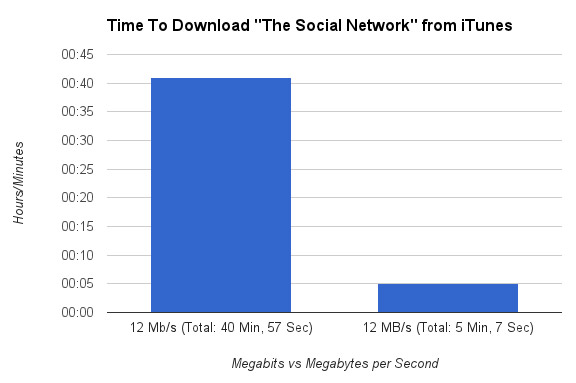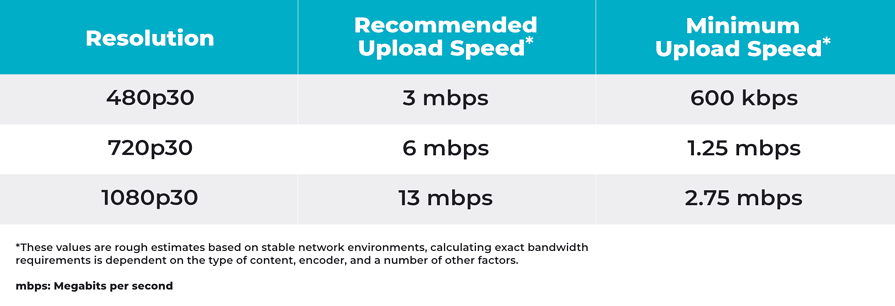A Comprehensive Guide to Measuring Megabits Per Second for Home Use
A Comprehensive Guide to Measuring Megabits Per Second for Home Use
Blog Article
Just How Megabits Per Second Effect Your Online Tasks
The principle of megabits per second (Mbps) plays an essential function in forming our online experiences. Higher Mbps can boost performance and decrease disruptions, while poor rates may foster frustration and inefficiency.
Understanding Megabits Per Second
When thinking about net rate, it's important to recognize the concept of megabits per second (Mbps), which functions as a common measurement for data transfer prices. This statistics evaluates just how much information can be sent over a web connection in one second, providing a clear understanding of efficiency abilities - Megabits Per Second. For context, one megabit is equal to one million little bits, and Mbps is frequently utilized to share bandwidth for different on the internet activities
A greater Mbps indicates a faster internet connection, enabling individuals to do tasks such as downloading and install data, surfing sites, and participating in on-line gaming much more effectively. Typical surfing requires around 1-5 Mbps, while streaming high-def video clip may require 5-25 Mbps. Recognizing these demands is crucial for identifying the ideal internet speed required for certain tasks.
Furthermore, the number of devices linked to a network can affect overall efficiency. Several users streaming, video gaming, or downloading and install at the same time can stress available transmission capacity, leading to slower rates - Megabits Per Second. Assessing individual online habits and demands is essential in picking a web strategy that aligns with one's demands, ensuring a smooth electronic experience
Streaming and Buffering Issues
Streaming high-definition material has actually ended up being a staple of modern on-line home entertainment, yet it is often accompanied by irritating buffering concerns. These disturbances can considerably interfere with the seeing experience, resulting in frustration and possible loss of target market interaction. Buffering occurs when the data transferred from the streaming service is not received quickly enough to keep a smooth playback, often due to inadequate web rate measured in megabits per second (Mbps)

In addition, real-time streaming can be influenced by network congestion, which occurs when several gadgets share the same data transfer. As a result, optimizing connection rate and guaranteeing ample Mbps is vital for a smooth streaming experience. As streaming services proceed to progress, understanding the impact of Mbps on buffering problems continues to be crucial for customers seeking continuous amusement.
Online Pc Gaming Efficiency
The effect of internet speed on online activities prolongs beyond streaming, considerably affecting on the internet video gaming performance. In competitive video gaming, low latency and high data transfer are important for a smooth experience. A rapid connection reduces lag, permitting gamers to react swiftly to in-game occasions, which can be the distinction in between success and defeat.
Bandwidth, measured in megabits per second (Mbps), plays an important duty in sustaining multiple devices and gaming platforms concurrently. Inadequate transmission capacity can bring about dropped connections or decreased video game quality, negatively influencing gameplay. For example, on-line multiplayer video games call for significant information transfer, particularly during peak video gaming hours when countless gamers are online.
Hectic first-person shooters require greater speeds to keep responsiveness, while turn-based strategy video games might work reasonably well on reduced speeds. As on the internet pc gaming continues to develop, with increasing visual integrity and more intricate multiplayer environments, the need for greater Mbps will just magnify.
Video Clip Conferencing High Quality
In today's digital landscape, video conferencing top quality is greatly influenced by internet speed, specifically in terms of bandwidth and latency. Top quality video clip calls need sufficient bandwidth to transmit sound and video information flawlessly. Commonly, a minimum of 1.5 Mbps upload and download rates is recommended for basic meaning video clip, while high-definition video conferencing usually demands at read here least 3 Mbps.
Latency, or the hold-up between sending out and obtaining information, additionally plays a critical function in the user experience. Reduced latency makes certain that discussions circulation normally without unpleasant stops or interruptions. Preferably, latency must be below 150 milliseconds for efficient communication. Higher latency can lead to resemble, lag, and disjointed interactions, which can impede partnership and interaction throughout conferences.
In addition, numerous individuals in a video seminar can stress offered transmission capacity, demanding even greater rates. Network blockage, typically triggered by simultaneous tasks like streaming he has a good point or downloading, can further weaken video high quality. Therefore, for companies counting on video clip conferencing for remote collaboration, comprehending the connection in between megabits per general and second communication quality is essential for keeping productivity and improving online interactions.
Selecting the Right Net Plan
Selecting a proper internet strategy is crucial for making sure ideal efficiency in different online activities, specifically in setups that require high bandwidth, such as video clip conferencing and online video gaming. Megabits Per Second. When considering a web strategy, it is important to examine both the speed and data allowance to match your certain usage demands
For houses with multiple individuals engaging in synchronised tasks, a strategy supplying greater megabits per second (Mbps) is recommended. Usually, a minimum of 25 Mbps is ideal for conventional streaming and browsing, while plans surpassing 100 Mbps are more effective for even more extensive jobs. Additionally, think about the nature of your online activities; video clip conferencing requires a minimum of 1.5 Mbps submit rate, while on the internet gaming may need a lower latency however regular link.
Endless data plans can stop strangling and disruptions, particularly if hefty usage is expected. By attentively picking an internet strategy customized to your needs, you can improve your on-line experience, making sure smooth, continuous access to your recommended activities.
Verdict
To conclude, the relevance of megabits per second (Mbps) in forming on the internet tasks can not be overstated. Greater Mbps promotes smooth streaming, lowers buffering, enhances video gaming experiences, and makes certain top notch video conferencing. On the other hand, poor transmission capacity can bring about aggravating disruptions and lessened efficiency across different jobs. Therefore, a comprehensive understanding of private or home Mbps requirements is vital for picking a proper web strategy that appropriately sustains varied online activities and customer needs.

Usually, a minimum of 25 Mbps is ideal for common streaming and browsing, while plans surpassing 100 Mbps are preferable for more extensive tasks. In addition, think about the nature of our website your online tasks; video clip conferencing calls for at the very least 1.5 Mbps publish rate, while on the internet gaming might need a reduced latency yet constant link.
Report this page